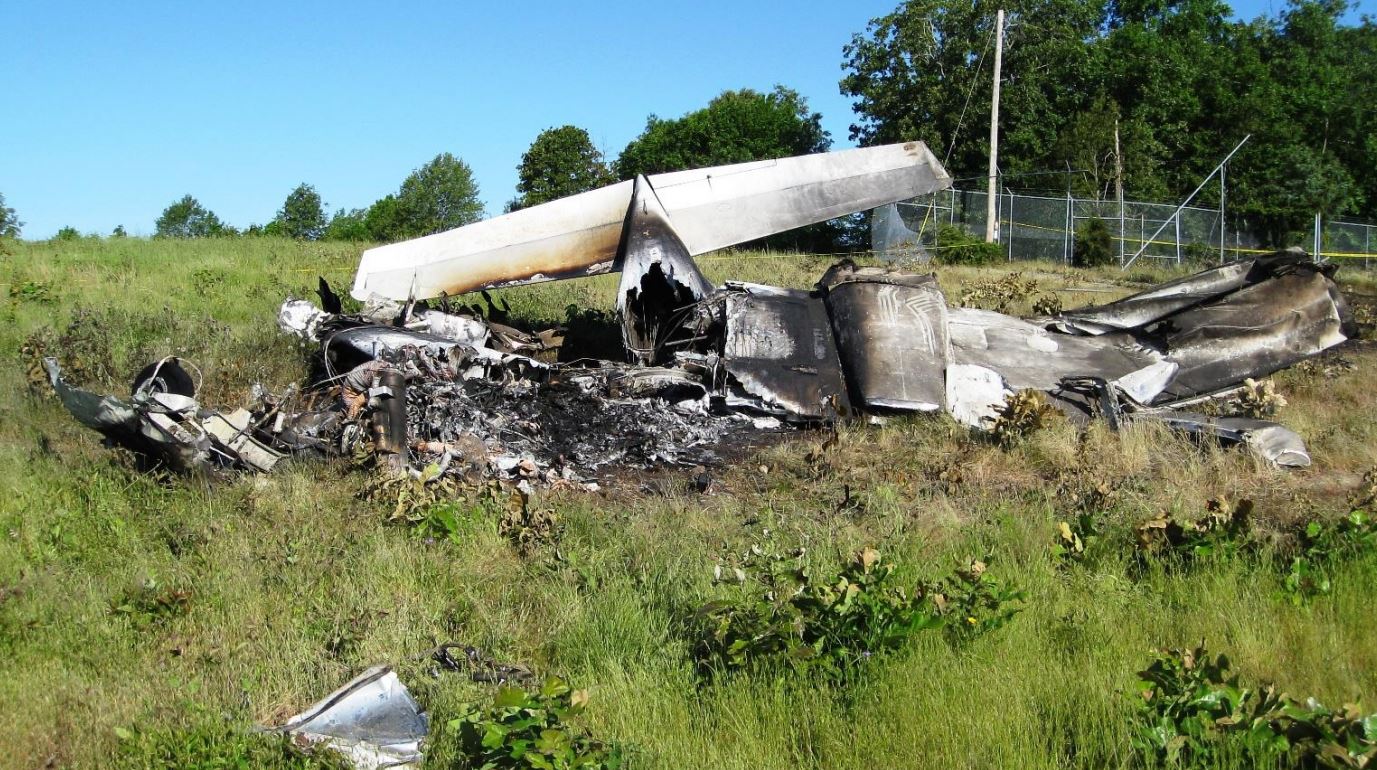
ASN Wikibase Occurrence # 186965
This information is added by users of ASN. Neither ASN nor the Flight Safety Foundation are responsible for the completeness or correctness of this information.
If you feel this information is incomplete or incorrect, you can submit corrected information.
| Date: | Thursday 5 May 2016 |
| Time: | 13:31 |
| Type: |  Cessna 310F |
| Owner/operator: | Lashbrook, Inc. |
| Registration: | N6770X |
| MSN: | 310-0070 |
| Year of manufacture: | 1961 |
| Total airframe hrs: | 6035 hours |
| Engine model: | Continental IO-470-D |
| Fatalities: | Fatalities: 1 / Occupants: 2 |
| Aircraft damage: | Destroyed |
| Category: | Accident |
| Location: | North Little Rock Municipal Airport (KORK), North Little Rock, AR -
 United States of America United States of America
|
| Phase: | Take off |
| Nature: | Training |
| Departure airport: | North Little Rock, AR (ORK) |
| North Little Rock, AR (ORK) | |
| Investigating agency: | NTSB |
| Confidence Rating: |
The commercial pilot was conducting a checkride in the multi-engine airplane with an airline transport pilot-certificated designated pilot examiner. The pilot reported that, during the initial climb after takeoff, the left engine experienced a partial loss of power. At this time, the airplane was climbing at its single-engine best rate-of-climb speed (Vyse). The pilot reported that he was able to maintain control of the airplane with partial right rudder and right aileron inputs, and chose not to shut down and secure the engine because it was still providing "positive thrust." The examiner reportedly agreed with the decision to keep the engine running and to make left turns in the traffic pattern due to the increased number of landing options in that direction. The left turns, toward the partially running left engine, would have decreased the directional control of the airplane. While on the downwind leg of the traffic pattern, the left engine lost further power, and the pilot then attempted to feather the left propeller. Although he moved the left propeller control full aft, the propeller did not feather. Radar data indicated a continual loss of airspeed as the airplane turned from the upwind to downwind leg and from the downwind leg toward the airport. The airplane reached a maximum altitude about 255 ft above ground level on the downwind leg. As it turned toward the airport, the airplane collided with terrain in a 45° left bank and slight nose-down pitch attitude and was subsequently destroyed by a postcrash fire.
The postaccident airframe, engine, and propeller examinations did not reveal any evidence of a mechanical malfunction that would have prevented normal operation; however, the airplane sustained significant postimpact fire damage, which prevented a full assessment of the fuel system and its configuration at the time of the accident. Examination of left propeller determined it was not in a feathered position at the time of impact, and that both blades appeared to be at or near the start lock position.
The propeller was equipped with start locks that engaged below 800 rpm to prevent feathering of the blades during engine shutdown on the ground. In the event of an in-flight engine shutdown, the propeller must be feathered before engine speed decays to 800 rpm. It is likely that the pilot allowed the left engine rpm to decay below the start lock engagement speed, which prevented the propeller from feathering and, instead, remain windmilling. This would have resulted in a large amount of parasitic drag and a significant decrease of the airplane's single-engine climb performance. Due to the windmilling propeller, it is likely that the airplane would not have been able to maintain altitude even if the pilot had maintained Vyse; however, the pilot should have maintained this speed to minimize altitude loss and maintain controllability of the airplane. As the pilot maneuvered the airplane back toward the airport, he allowed the airspeed to decay such that the airplane no longer had the flight control authority to counteract the yaw and roll produced by the operating right engine, which resulted in a loss of control at a low altitude.
Probable Cause: The pilot's failure to promptly feather the left propeller upon the initial loss of engine power shortly after takeoff and his failure to maintain airspeed while maneuvering with one engine inoperative, which resulted in a loss of control at a low altitude. Also causal was the partial loss of left engine power during initial climb for reasons that could not be determined because examination of the airplane did not reveal any evidence of mechanical malfunction that would have precluded normal operation.
Accident investigation:
 |
|
Sources:
NTSB
FAA register: http://registry.faa.gov/aircraftinquiry/NNum_Results.aspx?NNumbertxt=6770X
Location
Images:

Photo: NTSB
Revision history:
| Date/time | Contributor | Updates |
|---|---|---|
| 05-May-2016 20:23 | Geno | Added |
| 06-May-2016 09:25 | btd-1 | Updated [Registration, Source] |
| 06-May-2016 15:51 | Geno | Updated [Aircraft type, Cn, Operator, Source] |
| 07-May-2016 14:47 | Geno | Updated [Nature, Destination airport, Source] |
| 21-Dec-2016 19:30 | ASN Update Bot | Updated [Time, Damage, Category, Investigating agency] |
| 01-Jun-2018 09:55 | ASN Update Bot | Updated [Operator, Departure airport, Destination airport, Source, Narrative] |
| 01-Jun-2018 11:45 | harro | Updated [Source, Narrative, Photo, ] |
Corrections or additions? ... Edit this accident description
The Aviation Safety Network is an exclusive service provided by:


 ©2024 Flight Safety Foundation
©2024 Flight Safety Foundation